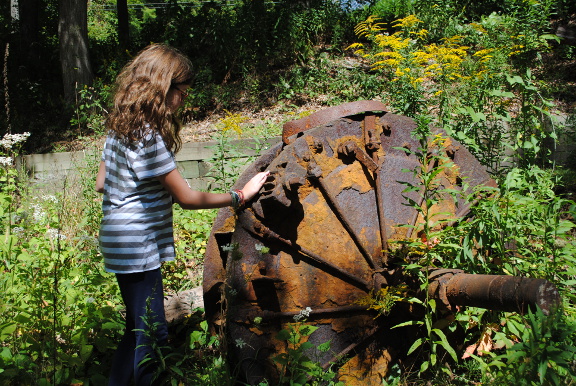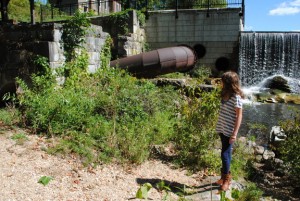We’ll be the first to admit that February is the earliest we can remember having a first school visit of the year here at Beckley Furnace, but we did that today!
The third grade of Salisbury Central School joined us — despite temps in the 20s — for a bit over an hour of exploration of the furnace and environs as well as discussion of the process of making iron here at Beckley Furnace. On hand were four experienced leaders: Ed Kirby, Cliff Waldow, Dick Paddock, and Geoff Brown, and, as well as the teachers, the SCS contingent was accompanied by Lou Buccieri.
The kids split into two groups of around 15 each, and while one group learned about what goes into making

iron (ore, limestone, charcoal), and what comes out (pig iron and slag — more about slag later) and went to visit the new hydraulic turbine exhibit, the other group learned about the iron industry in the tri-state area and viewed real photos of iron workers, furnaces, and mines as they appeared in the old days, and then had a hands-on tour of the furnace itself. Then the two groups changed places and we repeated the program for them.
Sadly, the weather had left us with about an inch of snow on the slag pile — always a highlight of school visits (and, in fact, most visits) — that made looking for slag samples to take home something we were able to leave out, especially since the open face of the slag heap faces north. The teachers tell us that the kids will view the video about slag when they get back to school, and many of the kids told us that they planned to bring their parents and siblings back for a visit to Beckley when the weather is a little better.
If you happen to see this and wonder if your school group (or other group) might enjoy a visit to Beckley Furnace, please let us know! More information about visits for school groups is here.


